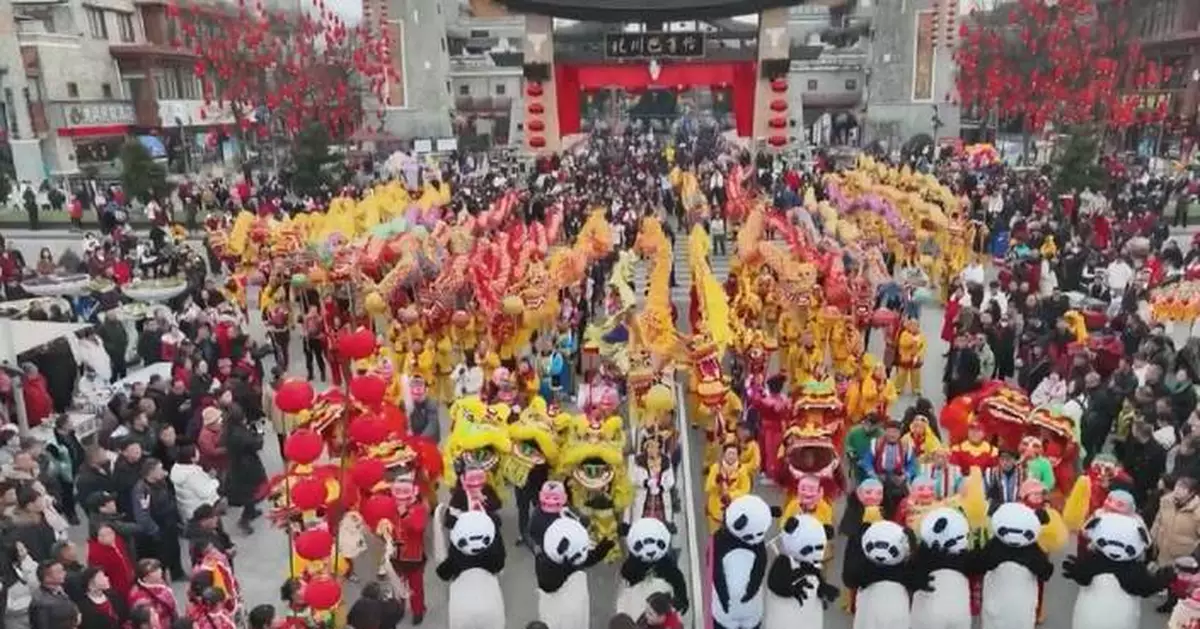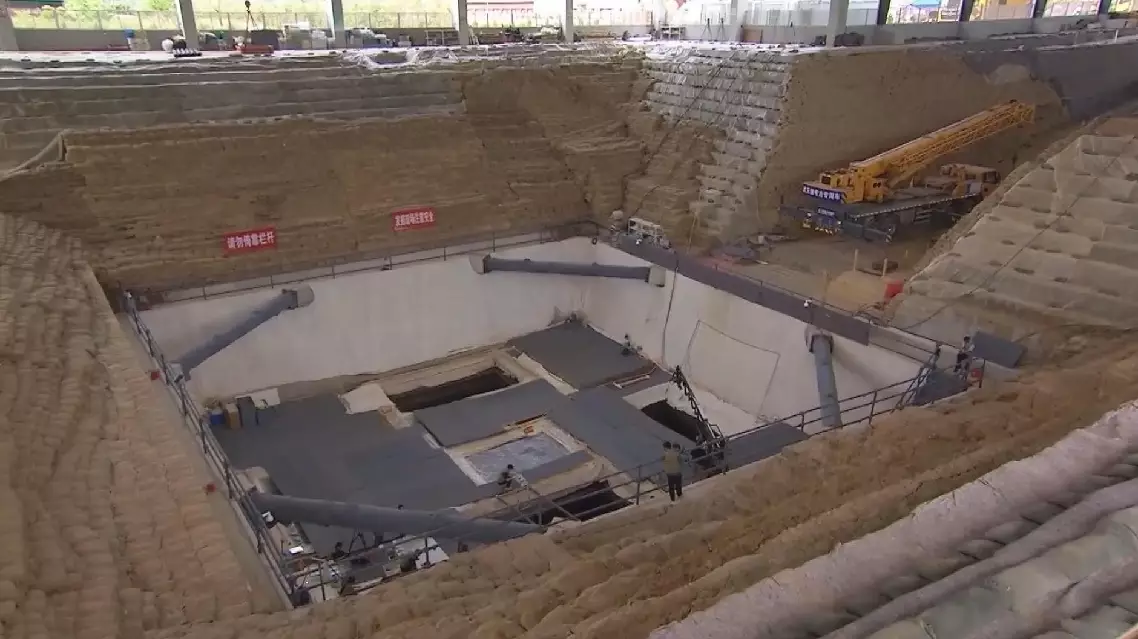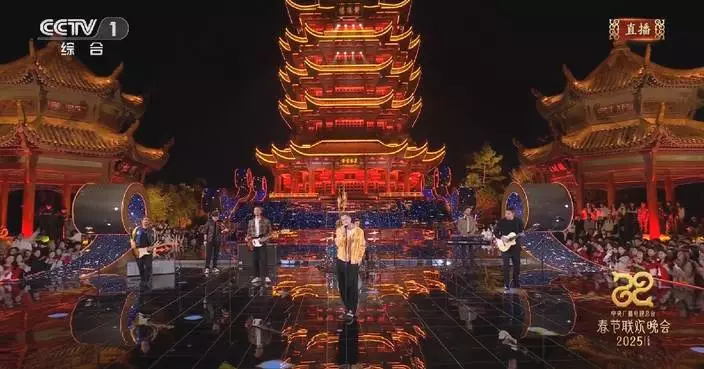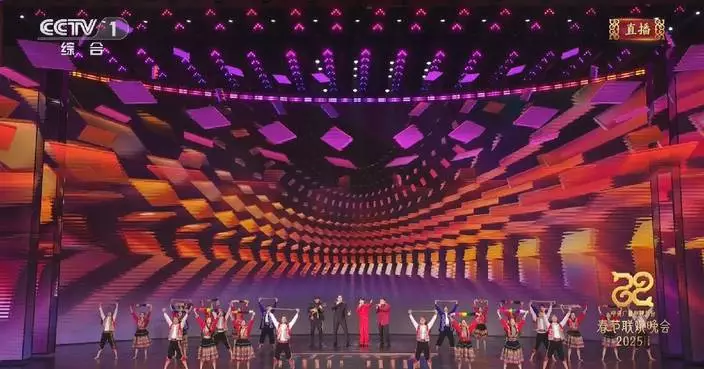Splendid light shows and intangible cultural heritage performances have been staged across China to celebrate the arrival of the Chinese New Year, which fell on Wednesday and marks the Year of the Snake. As the most important traditional festival for Chinese people, the Chinese New Year, or Spring Festival, is an occasion for family reunion, fairs and funs.
On the New Year's Eve, people got together with their relatives and friends to enjoy a wonderful dinner, reviewing the past year and looking forward to the new year.
The iconic Yellow Crane Tower in Wuhan, the provincial capital of central China's Hubei, saw an unprecedented vibrant and energetic atmosphere as the grand stage of the sub-venue of 2025 Spring Festival Gala was set at the foot of the traditional structure to complement the main venue in Beijing.
Colorful lanterns in different themes adorn the ancient city wall of Xi'an, northwest China's Shaanxi Province, vividly displaying the city's cultural deposits and Chinese New Year traditions.
The picturesque China Snow Town Scenic Area in northeast China's Heilongjiang Province, a fairytale winter holiday paradise featuring wooden houses covered by thick snow in mountains, further heightened tourists' joyous mood with festive decorations and various activities such as folk dances and float parades.
Giant lantern sets, firework shows and drone performances were also displayed in Hebei's Tangshan and Fujian's Fuzhou, lighting up the skies on New Year's Eve and wowing the celebrating crowds.
"[The show] was very spectacular and very beautiful. I came here to watch it with my families and my kid. I wish everyone a safe, healthy and auspicious Year of the Snake," said Ms Luo, a resident in Fuzhou City.
Hong Kong unfolded the Chinese New Year with dazzling festive lanterns at the Victoria Harbor. Lanterns in the shape of fish and lotus carried the wish of good fortune and peacefulness.
The 2025 Chinese New Year marks the first one since the United Nations Educational, Scientific and Cultural Organization (UNESCO) inscribed the Spring Festival on the Representative List of the Intangible Cultural Heritage of Humanity in December 2024.
A great variety of celebration events featuring intangible cultural heritages and folklore performances have been held across China since the beginning of the New Year.
In Hubei's Huangshi, the 300-year-old Wang Guiwu dragon lantern fascinated the tourists with hundreds of performers dancing with three giant dragons. The folk dance, which is distinctive for its combination of traditional martial arts and dragon dance skills, was included in the national intangible heritage list in 2021.
Dragon and lion dances were also played at Meicheng, an ancient town with a history of more than 1800 years in Jiande, east China's Zhejiang Province and the Juxian ancient city in Rizhao, Shandong Province, adding to the jubilant festive atmosphere.
The Jinhu Park in Zhuhai City of south China's Guangdong Province saw a characteristic performance by a local crane dance team in cooperation with a dragon dance team from Guangdong's Jiangmen City and lion dance teams from Hong Kong and Macao, highlighting the integration of the Guangdong-Hong Kong-Macao Greater Bay Area.
"Since the opening of the Hong Kong-Zhuhai-Macao Bridge, it has been very convenient for us Hong Kong and Macao residents to come to Zhuhai. Today, we visited Jinwan District in Zhuhai and had a great time. Their performances were wonderful with a strong festive vibe," said Ip Chi Yan, a tourist from Hong Kong.
Residents and tourists in Macao enjoyed themselves in the cheerful festive atmosphere on Wednesday, as the government celebrate the grandeur festival with a vibrant roadshow featuring traditional dragon and lion dances.
In Beijing, the annual temple fair at the Temple of Earth opened as scheduled on the first day of the Chinese New Year, with more focus on the elements of intangible cultural heritage and folklore customs, witnessing bustling crowds of tourists.
The traditional event is part of the 24 temple fairs, lantern fairs and garden fairs that will be held across the Chinese capital during the Spring Festival holiday season.
At Beijing's renowned pedestrian street of Qianmen, more than 50 Chinese museums and cultural and creative products development institutions have set up stalls to present their exquisite designs. The event, which runs through the Lantern Festival on February 12, also allows visitors to experience various traditional culture projects, aiming to promote the creative transformation and innovative development of fine traditional Chinese culture.
In Shanghai, the annual Yuyuan Garden Lantern Show -- a national intangible cultural heritage item -- not only highlights the demonstration of the lantern-making handicrafts in China, but also features scientific and technological progress with the blending of traditional and modern aspects.
"There are some optical projections as well as dynamic 3D lights and shadows at night. It is quite innovative to combine the tradition with modern technologies. I think it is a good place for having fun with families, full of the New Year mood," said Chen Yinglin, a tourist.
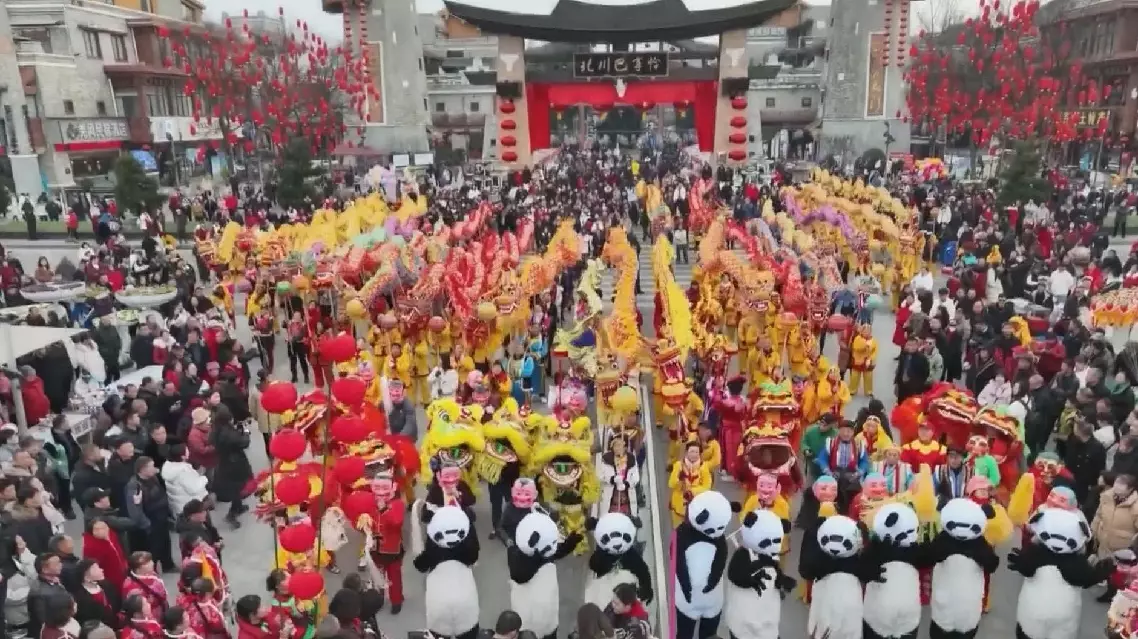
Spring Festival celebrated across China with splendid light shows, intangible cultural heritage performances


